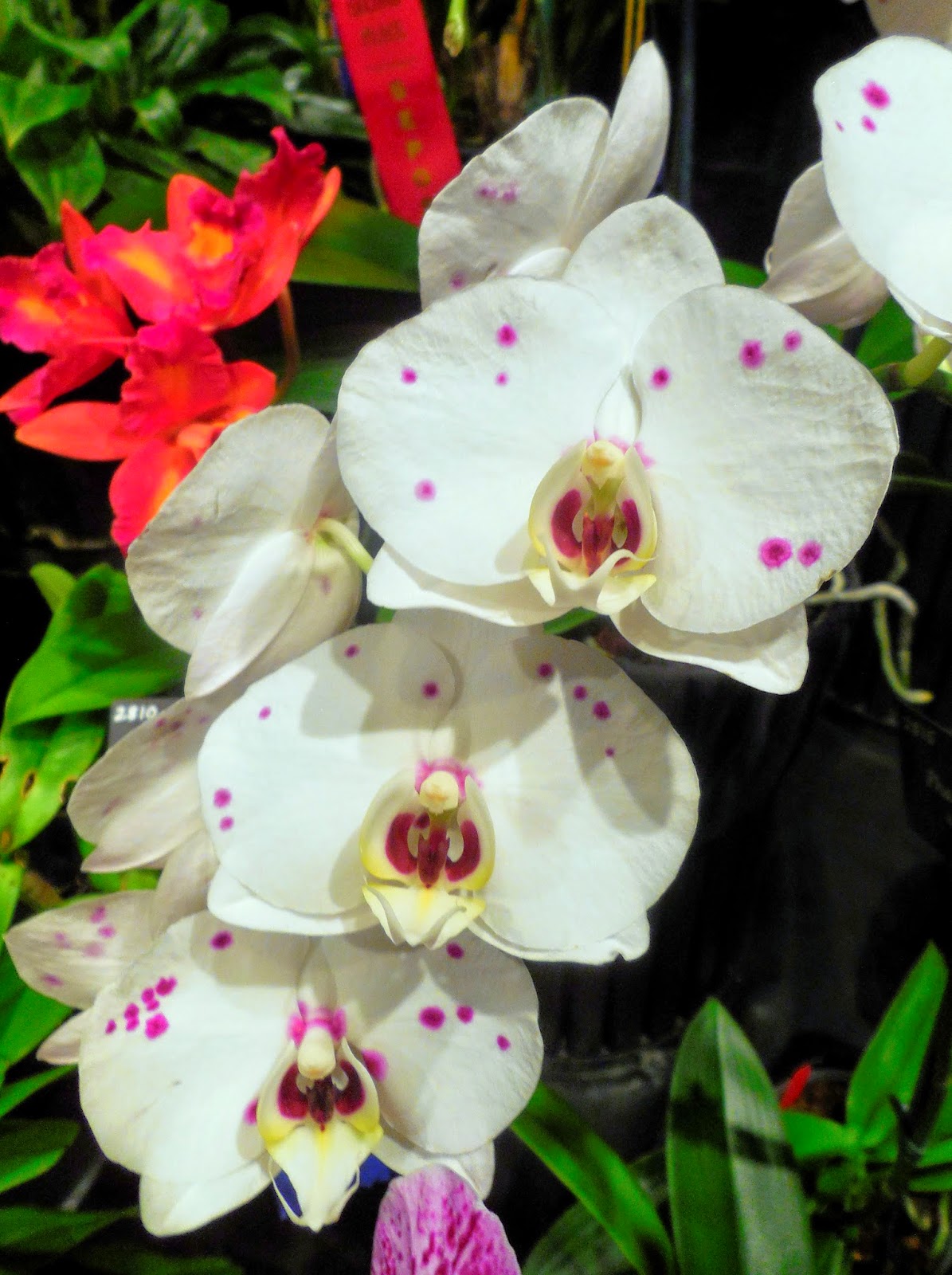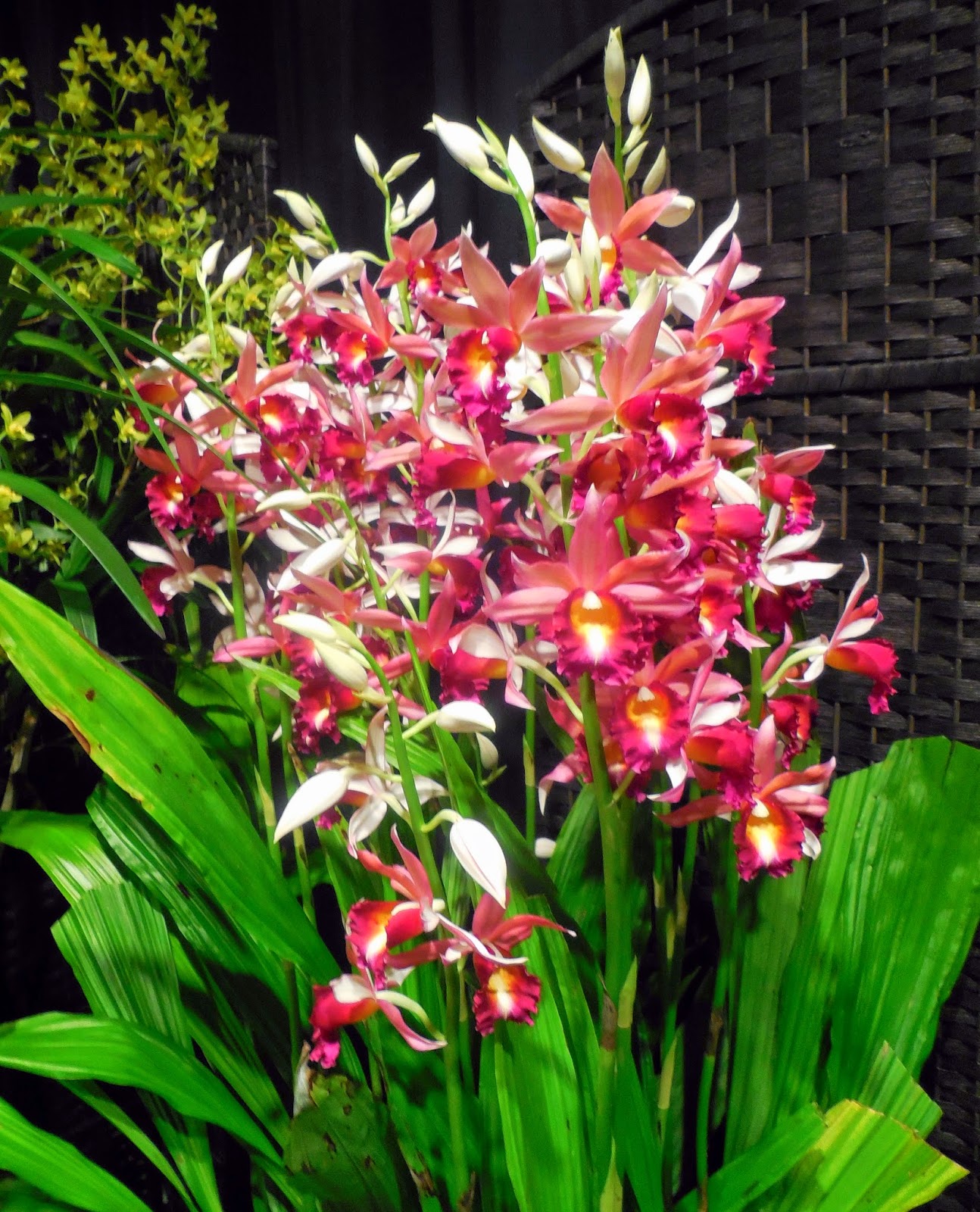Now that I've concluded my posts on my trip to London, I'll do one post on a trip I went to just last week. I was fortunate enough to be able to travel with the University of Minnesota Hockey Pep Band to the NCAA Frozen Four in Philadelphia. For this of you who aren't hockey people, this is the end to the National Championship Tournament and determines the National Champion for the year. The best thing about the trip is that was totally sponsored by the University of Minnesota, meaning I didn't have to pay a dime. Our job was to play at pep events and the games and we got to stay for 6 whole days. We won the semi-final with and AMAZING game ending buzzer-beater goal (I'll add a link if you want to watch it at the end of the post) but, sadly, lost in the final game.
BUT that's not what I'm going to be writing about. The 5th day in Philly I got to go to the Southeastern Pennsylvania Orchid Society (SEPOS) Show at the Museum of Natural History. I was blown away with the sheer number of orchids and the elaborate displays set up by the participants. If you're into orchids, this is the post for you. I've also included a few fun facts I learned at one of the panels about caring for Phalanenopis orchids (aka moth orchids). Keep reading to find out a few.
It Doesn't Have to be Difficult
First thing I learned is that growing orchids doesn't have to be difficult. This was a relief because I have two moth orchids here at home that haven't flowered since I bought them and I was worried I was doing something completely wrong. Finding out that wasn't totally the case was good news.
Repotting
The first thing I learned that I needed to do was repot my orchids. They're still sitting in the small plug-like pots and probably need it. I learned a few things about repotting orchids, however, that differ from my usual repotting methods.
1. After you've removed orchids from their original pot and before you repot them, snip off any dead or dying roots, just as you would with dead or dying shoot material.
2. Orchids like to be slightly root bound so you probably won't need a much larger pot to put them in. Repotting for orchids is mainly to refresh their growing medium so that the sphagnum moss or bark pieces are new and ready to go.
3. If you have roots sticking out of the pot, THAT'S OKAY. Orchids generally grow like this with roots sticking out crazily in their native setting so you can feel safe letting their roots roam.
For a good instruction guide for repotting orchids, this site provides an easy to read tutorial on how to do this.
Temperature
Orchids need temperature fluctuations in order to grow. The ideal is a 10 degree difference between night and day. So if you keep your house at a constant 68 degrees, you probably won't see much flowering. A good way to do this is to set your thermostat so that night time temperatures get down closer to 60 degrees. If your orchid is in a room in the house that stays warmer during the day because of sunlight, you won't have to set your heat up in the 70s because the sun warming the room will probably do that for you.
Fertilizer
While many sites say that fertilization every two to three weeks is fine, many growers stick with the "weakly weekly" approach where they use a quarter-strength 20-20-20 or 20-10-20 fertilizer every week. You should also flush your plants thoroughly once a month with water to prevent the build-up of salts that can inhibit the growth of your plant. Again, I highly recommend this site's page on fertilizer for a more in-depth look at this.
Do and Don't
There are a couple things I learned that moth orchids like and a few things they really don't.
DO: Mist the growing medium of your orchid. Orchids are tropical plants and light, constant moisture is beneficial.
DON'T: Let water sit in the center part of the plant where the leaves connect. This can cause your plant to develop rot and then no one is happy. Whenever you mist or water, be sure to wipe out any water that gets in this area.
DO: Cut off stalks after flowering has finished. This way, the plant knows it can put more energy into new leaf and root growth.
DON'T: Keep a stalk that might flower again. Yes, it's tempting, but these flowers probably won't be as large as the first flowers and it's costing the orchid a lot of energy just to get those buds to open. The health of your orchid will benefit from snipping that sucker off.
Finally, when buying moth orchids, it's important to try to look at the roots. If you are buying from a grower, ask if they can show you the roots before you make your purchase. Root health is VERY important with orchids, so buying one with healthy roots right away can drastically increase your chances of success.
So now that that bit is over, enjoy some pictures of the SEPOS orchid show to get excited about growing your own!
Finally, if you're still wondering about that amazing hockey game finish I talked about, here's the link to watch it for yourself!




















Helpful advices, and the orchids are stunning!
ReplyDeleteHappy Easter :-)
Thank you!! Happy Easter to you, as well! :)
DeleteAll your flower pictures are amazing, especially the orchids and love your helpful hints.
ReplyDeleteThank you for sharing with the Clever Chicks Blog Hop! I hope you’ll join us again next week!
Cheers,
Kathy Shea Mormino
The Chicken Chick
http://www.The-Chicken-Chick.com
Thank you and thank you for stopping by and reading! I really enjoyed stumbling upon the link party for the first time. Lots of really interesting posts to read and I also really enjoy reading your blog!
DeleteHappy Earth Day!
-Abby